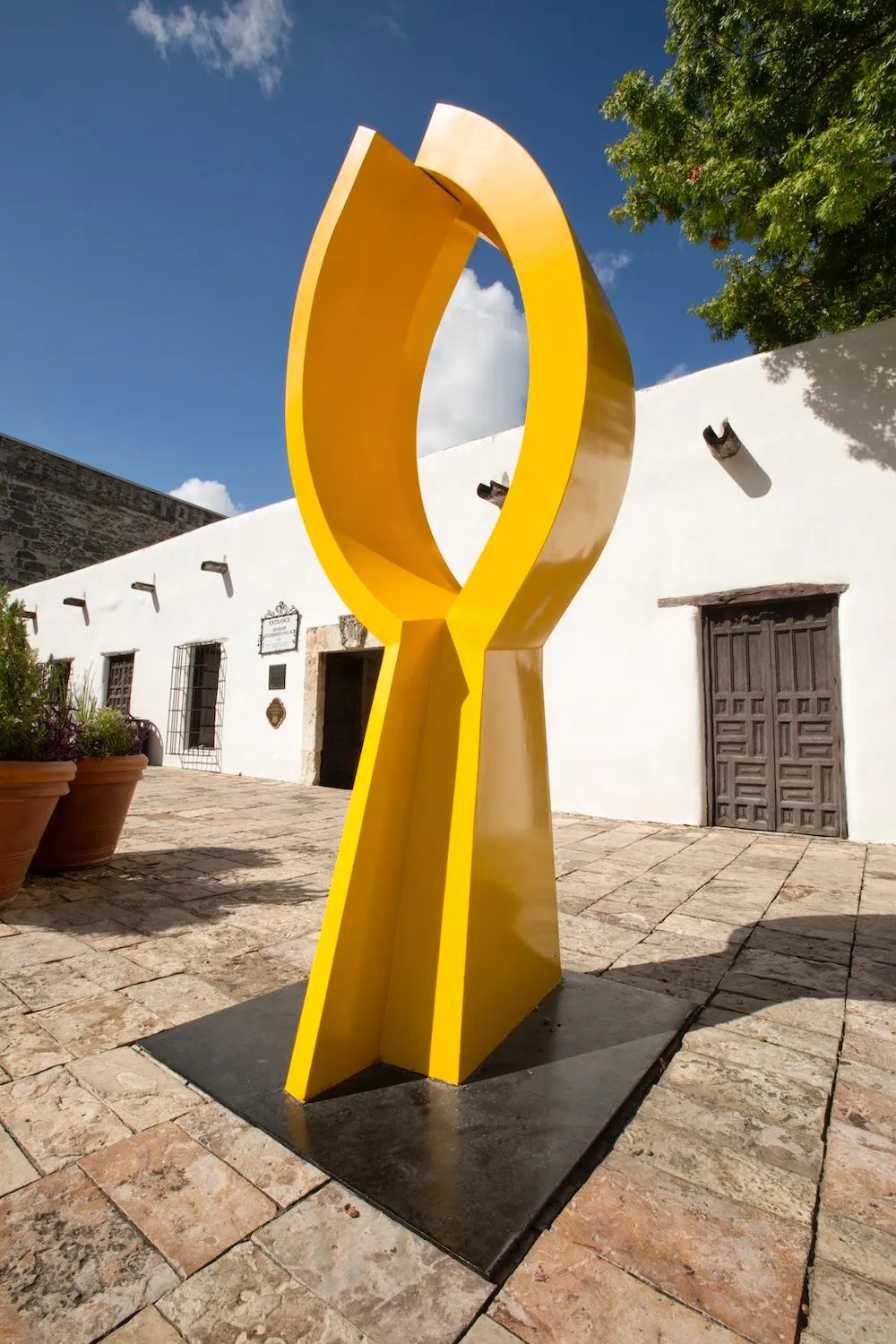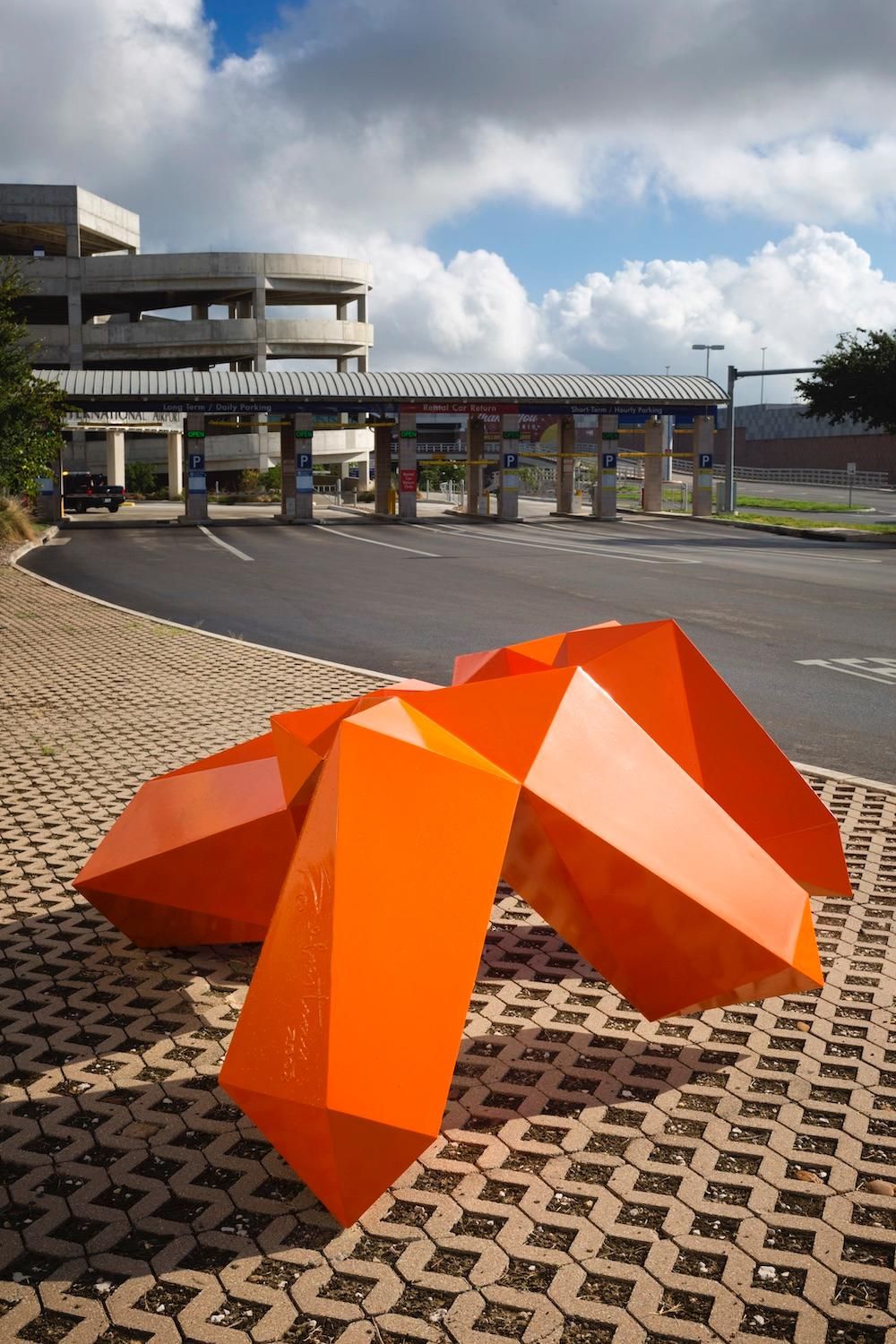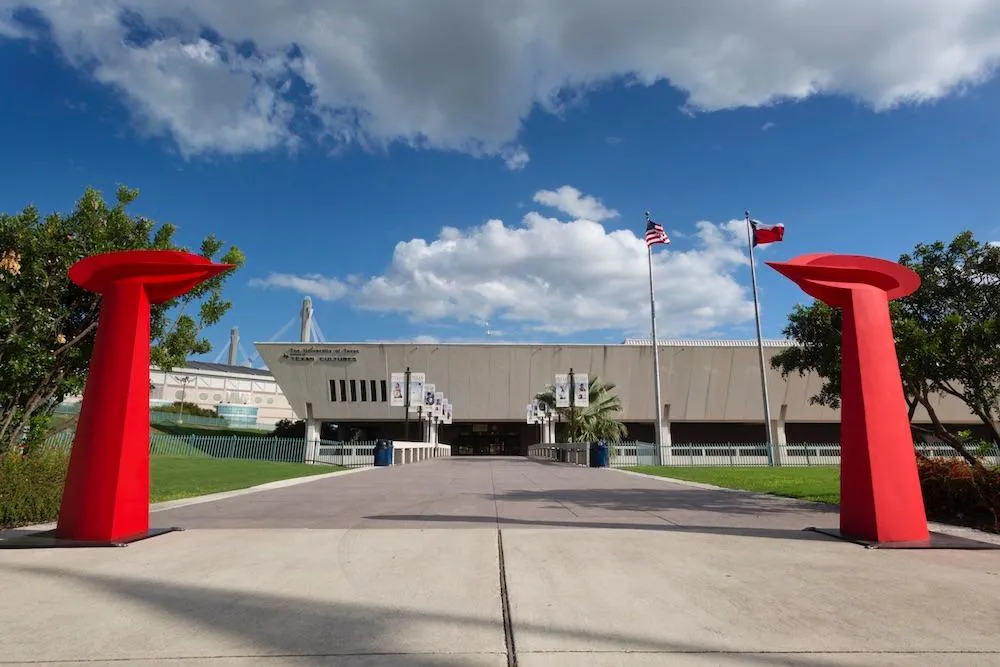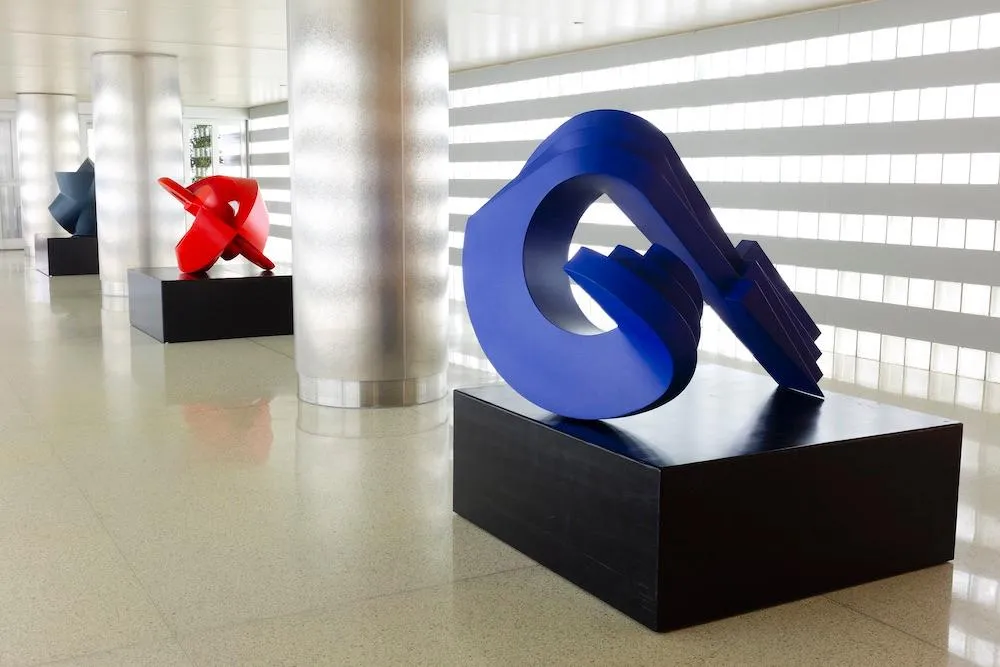San Antonio Displays More Than 100 Sculptures by Artist Sebastian
The city is celebrating the Mexican artist’s 50-plus year career with a massive exhibition
/https://tf-cmsv2-smithsonianmag-media.s3.amazonaws.com/filer/17/c5/17c52c24-846f-492e-a0e1-48f2d0e829ef/torch_of_friendship.jpg)
Towering above the intersection of Alamo and Commerce streets near the banks of San Antonio’s famous River Walk sits a monument that has become an important emblem of the Texas city’s art scene. Known as The Torch of Friendship, the 65-foot, reddish-orange steel sculpture is the work of Sebastian, a sculptor hailing from Mexico who created the 45-ton abstract installation on behalf of the local Mexican business community, which gifted the piece to the city of San Antonio in 2002. In the years since, it has become a recognizable part of the city’s landscape.
Now, 17 years later, the City of San Antonio Department of Arts and Culture welcomes back the 71-year-old sculptor for a massive retrospective of his extensive career. Called "Sebastian in San Antonio: 50+ Years | 20+ Locations | 100+ Works," the citywide exhibition, which kicks off today and runs through May 2020, features dozens of works from Sebastian’s personal collection and spans the artist’s 50-plus year career. Pieces will be on display at a number of the city’s most important cultural institutions, including the McNay Art Museum, Texas A&M University-San Antonio, the Mexican Cultural Institute, the Spanish Governor’s Palace and numerous libraries and outdoor plazas.
"This exhibit reflects the eternal bond between San Antonio and Mexico, which dates before 1836 when San Antonio and Texas were part of Mexico," says Debbie Racca-Sittre, director of the City of San Antonio's Department of Arts and Culture. "Every aspect of the exhibition reflects on the connection San Antonio and Mexico have with one another, from the artist, who splits his time between Mexico City and San Antonio, to the opening venue of the Instituto Cultural de México, which was established as a permanent cultural representation of the Mexican government in San Antonio after the 1968 World’s Fair on the site of the Mexican Pavilion."
Born Enrique Carbajal González, Sebastian adopted his pseudonym after seeing a painting called St. Sebastián by Italian Renaissance painter Sandro Botticelli. Over the years, he’s received numerous awards for his work and has been featured in nearly 200 solo exhibitions at museums throughout the United States, Germany, Spain, Japan, France and more. He has created permanent installations around the world out of his preferred mediums of steel and concrete, and was inducted into the Royal Academy of Art at The Hague, a fine arts academy in the Netherlands.
/https://tf-cmsv2-smithsonianmag-media.s3.amazonaws.com/filer/2e/5b/2e5b214b-43aa-444d-952c-4bba57b668b1/sebastian.jpg)
Not only does the artist's work transcend borders, but it also gives strength to a community whose roots run deep and play an important role in the cultural fabric of San Antonio.
"With 63 percent of San Antonio’s residents identifying as Hispanic, and a majority of this population having Mexican roots, San Antonio’s culture is deeply influenced by the traditions, heritage and history of Mexico," Racca-Sitte says. "[This exhibition] signifies much more than the mathematical equations Sebastian’s art visually represents. It symbolizes the compassion, kindness, understanding and connection that art can build between seemingly different places and people."
Smithsonian magazine caught up with Sebastian before the debut of the exhibition to discuss what inspires him, the importance of marrying science and technology with art, and the challenges he faces creating such enormous installations.
Why was San Antonio chosen as the city to host this major retrospective of your work?
About 20 years ago, I designed The Torch of Friendship. Growing up in Santa Rosalía de Camargo in Chihuahau, a state in Mexico that borders the United States, I would often travel north. Since my adolescence, I’ve always loved San Antonio, and it plays an extremely important role in the historical and economical relationships between the United States and Mexico.
Much of the retrospective will include pieces from your private collection. What was the selection process like when it came to deciding which works would make the cut?
The selection of the pieces are from both sides, from the city and from my own personal collection. I chose pieces that teach a little bit about what my work signifies, which is the creation of the language of a concept, and is a vision of nature—my vision of the contemplation of the macrocosms and microcosms in which I exist.
Did you create any new works for this exhibition?
Yes, there’s a new piece that is really beautiful and that I personally like a lot. It’s called Texas Star, and it signifies the strength of Texas. Like the majority of my work, it’s a metal sculpture.
Were you inspired by the city of San Antonio while making this new work?
I wanted to show how similar San Antonio is to my native land of Chihuahua and the strength of the people who live there. I also wanted to tell the story of the beginning of humanity, and about dolmens and menhirs, two of the first structures constructed by man. [Dolmens are megalithic structures typically formed from a large horizontal stone slab resting on two or more upright slabs, while menhirs are large, man-made upright stones usually dating to the Bronze Age of Europe.] This piece evokes those elements as a big star that glows with the light of the sun.
You’ve said in the past that the future of art is science and technology. Can you expand on this idea and give some examples of pieces that integrate science and technology?
A great majority of my pieces that will be exhibited are spheres and are from the series Quantum Spheres, which is inspired by quantum physics. I was inspired by mathematics and geometry when I created these pieces. Technology is always taken into account whenever I make a piece. I use a computer when making all of my works to ensure that they’re built correctly and are structurally sound.
What are some of the challenges you face creating such enormous sculptures?
When creating monumental sculptures, you need to think like an engineer, an architect and an urbanist all in one in order to design these kinds of structures. The difficulty is the calculations and implementing the correct structural strategies so that the designs are stable and don’t provoke a catastrophe.
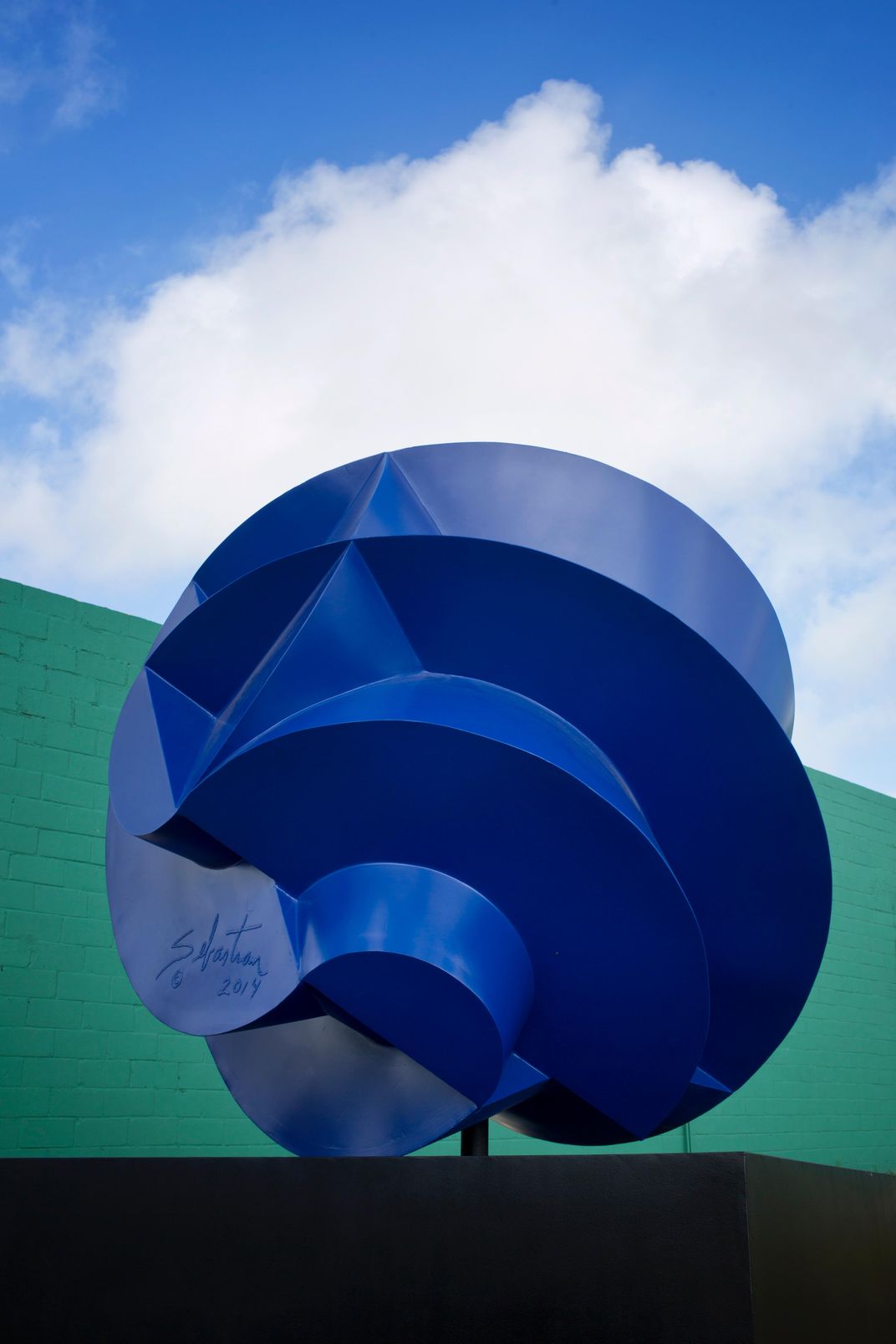
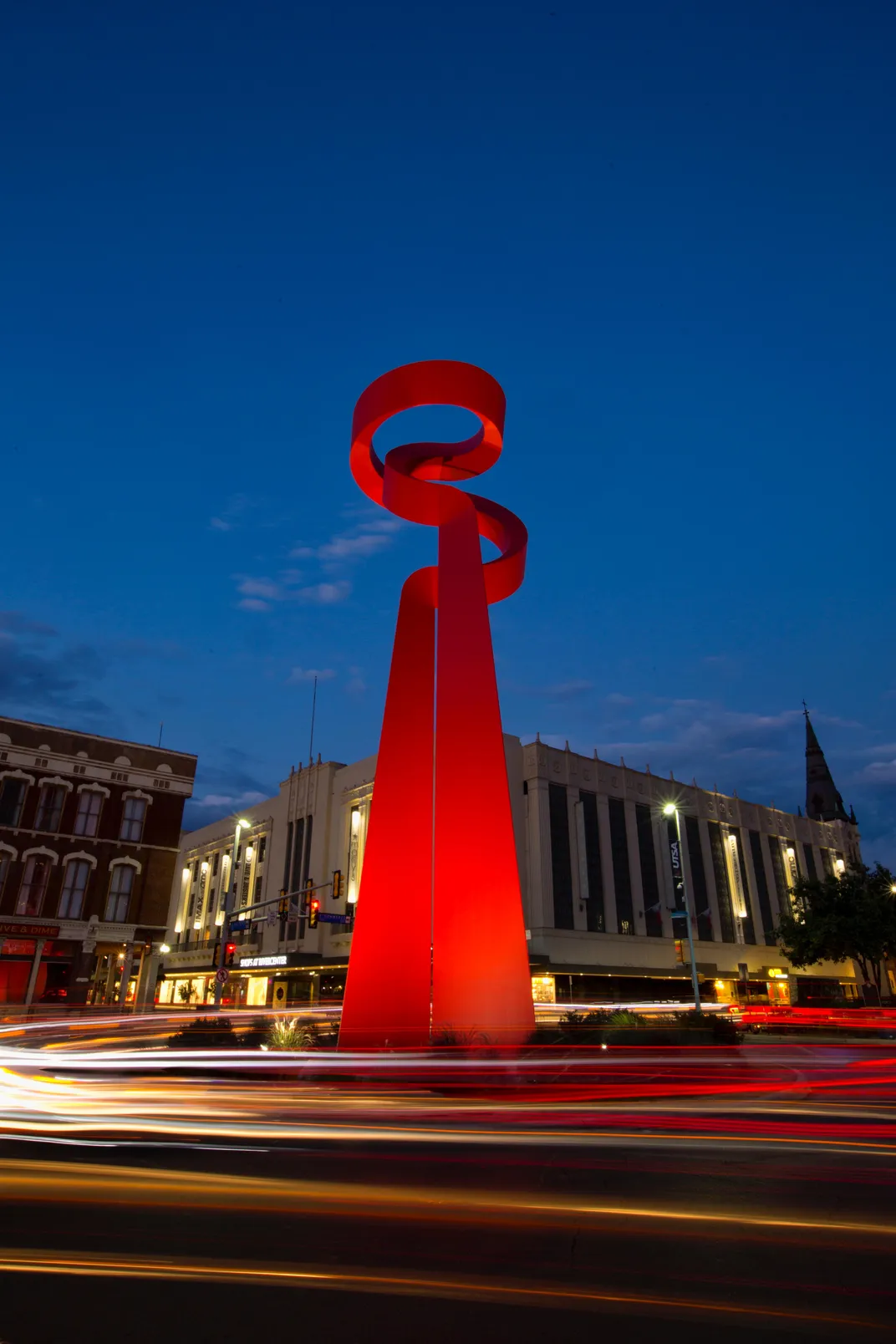
/https://tf-cmsv2-smithsonianmag-media.s3.amazonaws.com/filer/22/46/22466c62-7f2f-49b0-a16e-c01d2902afaa/sebastian_-_unam_san_antonio_-_unamita_-_photo_credit_joel_salcido__copy.jpg)
/https://tf-cmsv2-smithsonianmag-media.s3.amazonaws.com/filer/b3/61/b361dc8d-84c8-4c5a-9ccc-ff721c880441/156771870759661016.jpg)
/https://tf-cmsv2-smithsonianmag-media.s3.amazonaws.com/filer/a9/56/a956f5f1-ba14-435b-b7d3-77b4806c3932/sebastian_-_aguila_-_location_mexican_cultural_institute_-_photo_credit_joel_salcido_copy.jpg)
